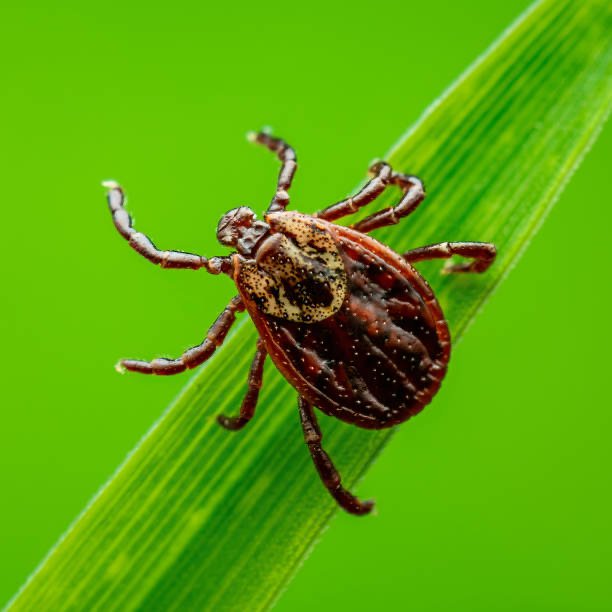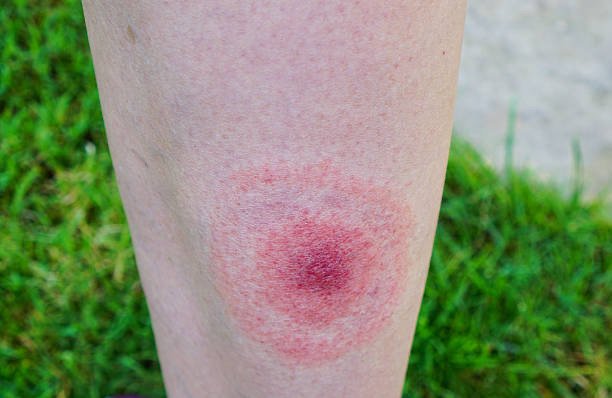A promising clinical study run by Pfizer and Valneva has trial sites across the tri-state area

If you’ve been waiting for a Lyme disease vaccine, now’s your moment to get jabbed. Phase three of a clinical study by Pfizer Inc. and Valneva SE is now enrolling about 6,000 participants ages 5 and up in Europe and the United States, including locally.
Officially, the vaccine is called VLA15, a vaccine against Lyme for outdoor recreationists. According to a press release, data from phase two “continue to demonstrate strong immunogenicity in adults as well as in children, with acceptable safety and tolerability profiles in both study populations.”
The goal of the third phase is “to investigate the efficacy, safety and immunogenicity of their investigational Lyme disease vaccine candidate.”
LOCAL NEWS YOU CAN’T FIND ANYWHERE ELSE: 6 Months for 99¢
That’s a lot of jargon but here’s what you need to know: if all goes well, applications for approval would go to the FDA and its European counterparts in 2025. (Valneva is a French biotech company.)
While all VLA15 phase three trial sites are situated in Lyme-endemic regions, there are somehow none in the Hudson Valley — yet. Still, it’s an easy drive to sites in Albany, as well as Connecticut and New Jersey. “A participant is welcome to travel to sites if they are enrolled in the study,” said Kit Longley of Pfizer Global media relations, in an email.
Sign-up is simple, though despite Longley’s assertation, this Hudson Valley resident wasn’t automatically offered a site to travel to. Accepted participants will get three doses to start and then a future booster dose. No one will know if they get the vaccine or saline placebo.
One person who will not be participating in the study is Dr. Rick Ostfeld, a disease ecologist with The Cary Institute of Ecosystem Studies in Millbrook. Though he is an expert in Lyme and other tick-borne diseases, and he and other colleagues took part in a Lyme vaccine trial in the late 1990s run by Connaught Laboratories, he wasn’t approached to enroll in this Pfizer-Valneva study, so he isn’t doing so. “I have no qualms about enrolling in such things,” he noted.
The previous vaccine — the manufacturer now known as GlaxoSmithKline beat out Connaught to the market — was available for a few years and then pulled for poor sales. “The vaccine was accused of causing some autoimmune disorders in people. A class action lawsuit was filed and settled out of court. I’m not aware of any evidence that the complaint had any merit, but I guess enough damage was done that it wasn’t profitable,” Ostfeld said.
He assumes VLA15 will be similar to the GlaxoSmithKline vaccine, with improvements and attention to avoiding any other immune response that might cause problems. “It’s supposed to be safer, even though the first one was quite safe,” Ostfeld said.

As an outsider with over three decades of experience with ticks, Ostfeld has some broad concerns about the vaccine. “It isn’t just Lyme anymore. We know there are other tick-borne diseases that are increasing and more and more of a menace all the time. In some cases, they are increasing faster than Lyme.” Any Lyme-only vaccine will have no impact on Powassan virus, Babesiosis, Anaplasmosis, or other concerning diseases.
“That is a potential drawback to this vaccine,” Ostfield said. “You may think, ‘let’s take these diseases one at a time. Lyme is most frequent.’ One potential problem is if you get your vaccine about Lyme, now you think you don’t have to worry about tick bites anymore.”
Should people relax vigilance against tick bites, it’s possible they will be at higher risk of getting other tick-borne infections. Ostfeld wishes any Lyme vaccine will be accompanied by patient education to warn people to continue to take precautions to protect against tick bites. These include imperfect but effective steps well known in the Hudson Valley: tick checking and wearing repellents, long pants and long socks, and trying to stay out of tall grasses and leaf litter.
Ostfeld is hopeful that in the next five to 10 years there will be an anti-tick vaccine. “This is not based on a particular pathogen. (An anti-tick vaccine) would prime your immune system to attack the tick itself when it starts to bite you,” he said. “There are all kinds of really interesting chemicals in tick saliva. They are able to stay attached for the several days it takes to get a blood meal from us. They have antihistamines and anticoagulants. It’s remarkable.”
There are scientists, including at Yale, currently fast at work on targeting proteins in tick saliva that would cause humans to attack ticks’ salivary glands. The idea would be for people to get a big reaction at the site of a bite and that humans could kill ticks or at least make them withdraw so they can’t embed in our skin.
“That would work against all of these tick-borne pathogens. I would be more bullish about that than a vaccine against one thing,” said Ostfeld. The difficulty is developing this kind of vaccine in a way that humans won’t react to their own proteins. “It’s a safety issue in designing a vaccine.”
For now, as hopeful people in tick-infested communities enroll in phase three of the first possible Lyme vaccine in 20 years, Ostfeld feels VLA15 could be useful, but it’s not the cure locals have been waiting for. “I don’t see it as a panacea. I don’t think it’s going to end the Lyme epidemic, but it will help.”
Source: timesunion.com
